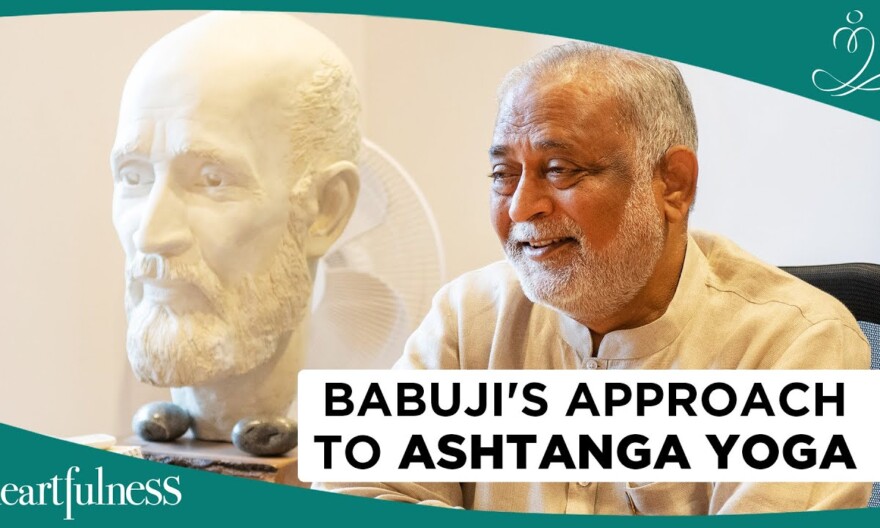
I find myself constantly seeking spiritual enlightenment and exploring various paths to achieve it. One of the most ancient and profound practices I have encountered is Patanjali’s Ashtanga Yoga. In this blog post, I will delve into the depths of this transformative practice and share valuable insights on how to embark on the journey towards enlightenment through the principles of Ashtanga Yoga. Join me as I unravel the mystique of this ancient wisdom and guide you on a path of self-discovery and illumination. Welcome to this enlightening exploration!
Introduction
As a seeker of enlightenment, I have always been curious about different paths and practices that lead to spiritual growth. Patanjali’s Ashtanga Yoga has long intrigued me, with its eight steps outlined as a comprehensive guide to attaining self-realization. In this article, I will delve into the teachings of Daaji, the fourth spiritual luminary of the Heartfulness movement, and explore how Patanjali’s Ashtanga Yoga can pave the way to enlightenment.
- The Eight Steps of Patanjali’s Ashtanga Yoga
Patanjali’s Ashtanga Yoga consists of eight limbs, or steps, that progressively lead us towards spiritual awakening. These steps are as follows:
-
Yama: This step focuses on ethical disciplines, including non-violence, truthfulness, non-stealing, continence, and non-possessiveness. By adhering to these principles, we establish a solid foundation for our spiritual journey.
-
Niyama: Niyama emphasizes self-discipline and personal observances. This step involves practices such as cleanliness, contentment, austerity, self-study, and surrender to a higher power.
-
Asana: Asana refers to the physical postures practiced in yoga. These postures help us attain physical fitness, flexibility, and stability, preparing our bodies for deeper meditative experiences.
-
Pranayama: Pranayama involves breath control techniques that help regulate our life force energy, known as prana. By mastering pranayama, we enhance our vitality and connect more deeply with our inner being.
-
Pratyahara: Pratyahara is the withdrawal of the senses from external distractions. By turning our attention inward, we detach ourselves from the external world and focus on cultivating inner awareness.
-
Dharana: Dharana refers to concentration. During this stage, we learn to concentrate our mind on a single point or object, developing mental stability and unwavering focus.
-
Dhyana: Dhyana is meditation, the uninterrupted flow of awareness towards an object of concentration. Through continuous meditative practice, we cultivate a state of calmness and clarity.
-
Samadhi: Samadhi is the ultimate goal of Ashtanga Yoga—a state of complete absorption and union with the divine. In Samadhi, the practitioner experiences divine bliss and transcends the boundaries of the individual self.
-
Daaji’s Guidance on Starting with Dharana, Dhyana, and Samadhi
While the eight steps of Ashtanga Yoga can be practiced in sequence, Daaji suggests that beginners focus on Dharana, Dhyana, and Samadhi initially. By nurturing concentration, deepening meditation, and experiencing glimpses of Samadhi, we lay a strong foundation for further spiritual progress.
- The Inward and Outward Journeys of Ashtanga Yoga
Ashtanga Yoga encompasses both inward and outward journeys. The initial four limbs (Yama, Niyama, Asana, Pranayama) primarily focus on the outward journey, preparing the physical body and mind for the inward exploration. The remaining limbs (Pratyahara, Dharana, Dhyana, Samadhi) guide us towards self-realization and mastery of the mind.
- Getting Started with Heartfulness Meditation
For those interested in embarking on their spiritual journey with Heartfulness Meditation, booking a free meditation session is a great way to begin. Heartfulness offers individual and group meditation sessions conducted by experienced trainers, either in person or online.
To enhance your practice, you can also explore the Heartfulness Meditation subscription and app available, which provide guided meditations, relaxation techniques, and support for your daily practice.
- Resources and Support in Heartfulness
Heartfulness provides a wealth of resources to support seekers. You can order “The Authentic Yoga” book to gain deeper insights into Patanjali’s Ashtanga Yoga and its connection to Heartfulness Meditation.
Heartfulness trainers and meditation centers are available worldwide, where you can receive guidance and interact with experienced practitioners. Additionally, Heartfulness accepts donations for their tree conservation initiative, helping us contribute to the well-being of the planet.
For a comprehensive understanding of the Heartfulness approach, “The Heartfulness Way” book, co-authored by Daaji, is highly recommended. It eloquently presents practical techniques, personal experiences, and profound insights into the journey of the heart.
- Additional Books and Subscriptions to Deepen Your Practice
To further explore spiritual growth and self-development, Daaji’s book “Designing Destiny” offers invaluable wisdom and practical tools.
Heartfulness Magazine offers digital and print subscriptions, providing a wide range of articles, interviews, and meditative practices to support your ongoing spiritual journey.
- Stay Connected with Heartfulness
To stay connected with the Heartfulness community and receive regular updates, you can follow Heartfulness on various social media platforms. This enables you to be part of a global network of seekers who are walking the path of inner transformation.
- Contact Information and Online Store
For those in India, Heartfulness has an online store where you can purchase meditation-related items such as books, relaxation aids, and accessories to enhance your practice.
If you have any queries or require further assistance, you can reach out to Heartfulness through email or their toll-free numbers, ensuring that you have the necessary support on your journey towards enlightenment.
Conclusion
Patanjali’s Ashtanga Yoga, as explained by Daaji, offers a comprehensive roadmap towards enlightenment. By following the eight steps and integrating Heartfulness Meditation into our daily lives, we can embark on a transformative journey of self-discovery and spiritual growth. Embracing concentration, deepening meditation, and experiencing moments of Samadhi are the key ingredients to unlocking the path to enlightenment.
FAQs:
- What is the significance of Patanjali’s Ashtanga Yoga?
- How can I start practicing Ashtanga Yoga?
- What are the benefits of Heartfulness Meditation?
- Where can I find Heartfulness trainers and meditation centers?
- How can I contribute to the tree conservation initiative through Heartfulness?





